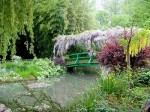 Have you ever noticed that many paintings include gardens? The garden is usually the background for some person or activity that is featured in the foreground but sometimes the garden is the subject it self. The garden may be intended for private pleasure or grand festivities, be formal or casual, stand out from the surrounding landscape or blend into it. Plants may be organized in formal beds, cut into shapes, or allowed to grow naturally; fountains, statues and benches may be present; and water may be in fountains, pools, or running down the handrail of a staircase. The choice of characteristics and the way they are organized in the garden depend on many factors but reflect the values of the artist and the society in which he/she lives.
Have you ever noticed that many paintings include gardens? The garden is usually the background for some person or activity that is featured in the foreground but sometimes the garden is the subject it self. The garden may be intended for private pleasure or grand festivities, be formal or casual, stand out from the surrounding landscape or blend into it. Plants may be organized in formal beds, cut into shapes, or allowed to grow naturally; fountains, statues and benches may be present; and water may be in fountains, pools, or running down the handrail of a staircase. The choice of characteristics and the way they are organized in the garden depend on many factors but reflect the values of the artist and the society in which he/she lives.
Through out time gardens have shared certain set elements, such as paths, water features, walls, statuary, and plant material. Not every garden contains all the elements or contains them in the same way. Garden elements are combined and used in many different ways according to the needs and tastes of the age in which they designed. As a result, each age produces a unique style of garden that reflects its aesthetics and life-style. Artists can draw both from examples of the past, or from the living gardens around them. Either way, the gardens in works of art provide a rich source of information and inspiration to modern gardeners.
Here are some examples of gardens in art. Try to overlook the differences in painting style and just focus on the garden elements and the way they are used to create the garden.
The garden in this first photo is an example of the hortus conclusus, the enclosed garden of the Middle Ages. The wall clearly defined the garden and made it distinct from the landscape around it while providing protection and privacy. A fountain was in the center with trees, shrubs and herbaceous plants all around.
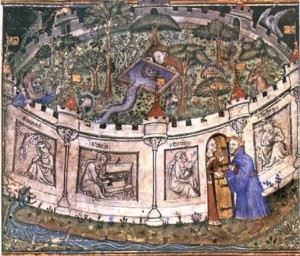
Humphrey Repton’s portray of the rose garden at Ashridge also shows us an enclosed garden but without the ominous feeling of the hortus conclusus. The garden is clearly separated from the landscape but the numerous openings in the enclosing trellis introduces a feeling of openness. The garden is planted in neat parterres with roses espaliered on the enclosing trellis. As in the hortus conclusus, a fountain occupies the center of the garden where is spews out an abundance of water.
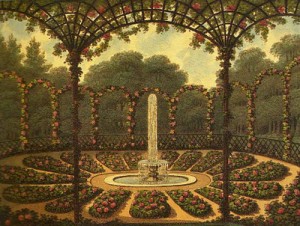
Very different from the above two gardens is the one painted by Monet. Based on a scene from his garden at Giverny, White Water Lilies shows a garden bridge, flowing stream and abundant plant material growing in abandon. No wall defines the space, confines the plants, or provides protection. Water also is free, not in the confines of a fountain or pool.
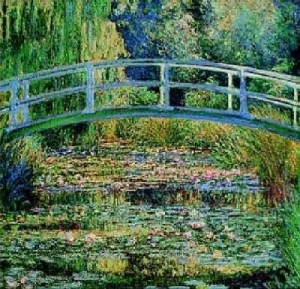
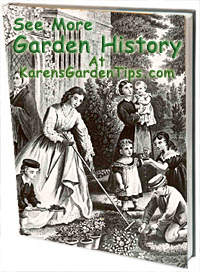 These three works of arts give just a small idea of how three garden elements can be used to produce very different gardens. One of the gardens was fanciful, the other two taken from real life, but all reflected the needs and aesthetics of the people that created them, just as all gardens do. Future posts will explore other paintings and other elements to develop an awareness of what can be learned about gardens and people’s values through out time world-wide.
These three works of arts give just a small idea of how three garden elements can be used to produce very different gardens. One of the gardens was fanciful, the other two taken from real life, but all reflected the needs and aesthetics of the people that created them, just as all gardens do. Future posts will explore other paintings and other elements to develop an awareness of what can be learned about gardens and people’s values through out time world-wide.